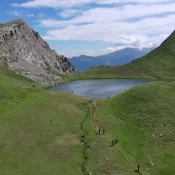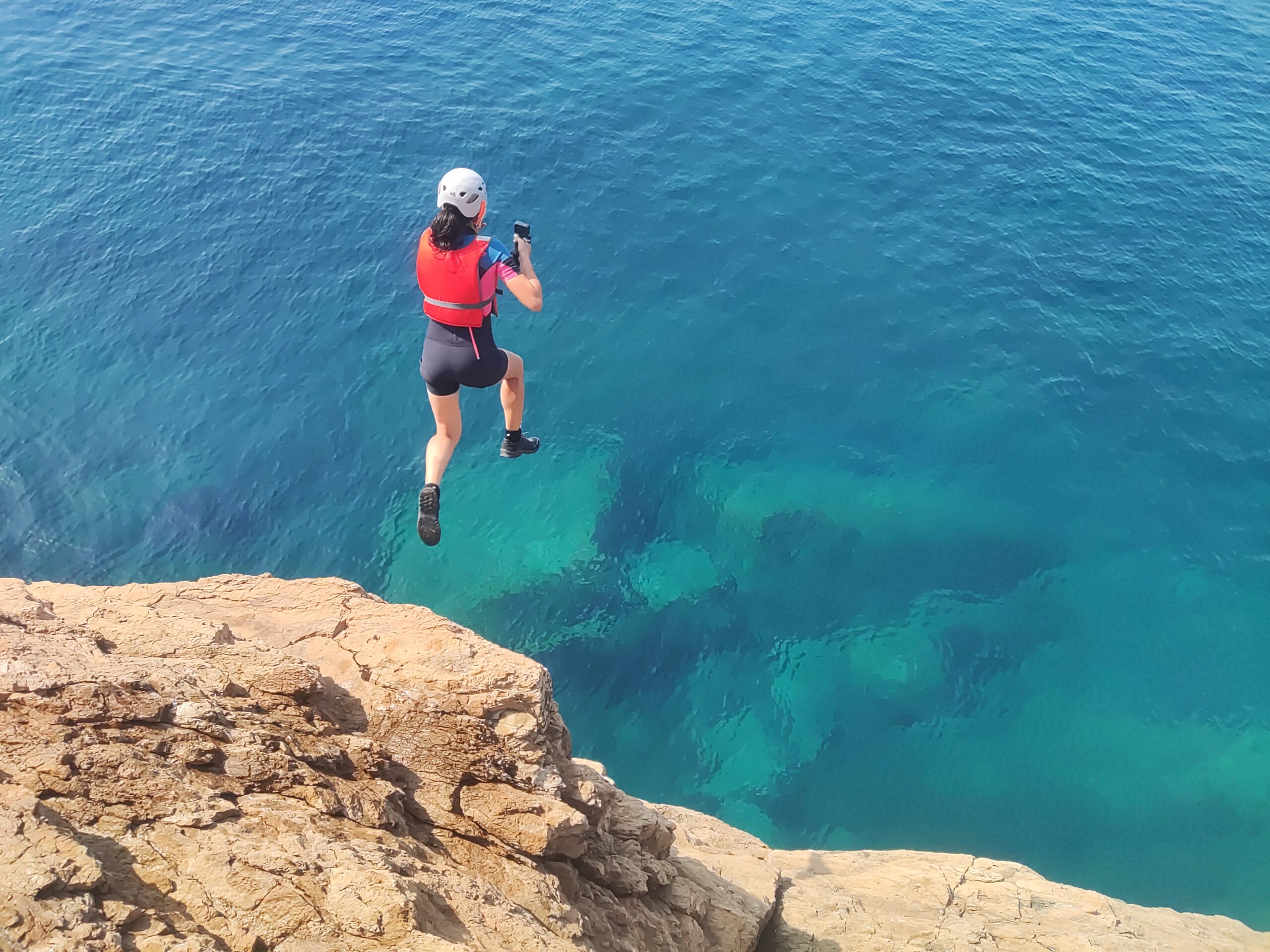
What Is Coasteering?
What Is Coasteering? Exploring Coastlines with Adventure
Coasteering is an exciting outdoor activity that combines various movement techniques and exploration along the coastline. Participants move between rocks, swim in open waters, climb steep surfaces, and jump from cliffs into the water. This activity, which merges land and water, offers a unique experience for those who wish to explore coastal nature from a different perspective.
What Does Coasteering Involve?
Coasteering is a multi-activity adventure that includes:
- Hiking and Climbing: Participants move along rocky coasts, often on rugged paths or steep cliffs.
- Swimming in Open Water: Exploring the coastal area by swimming through sea caves, hidden coves, and natural pools.
- Cliff Jumping: One of the most thrilling aspects of coasteering is jumping from heights straight into the water, boosting adrenaline levels.
- Rock Scrambling: Participants use their hands and feet to climb and move between the rocks along the coastline.
The Appeal of Coasteering
Coasteering is ideal for those who love adventure and want to actively explore the natural environment. Unlike other outdoor activities, coasteering involves both land and water, making it perfect for those who love the sea and the coast. It also offers a rare opportunity to explore remote and wild coastlines, often inaccessible from land.
Who Is Coasteering For?
Coasteering is suitable for people who are in good physical condition and enjoy activities near the sea. Routes can be adapted depending on the participants’ experience levels, from beginners to advanced. The presence of guides and specialized equipment makes the activity safe and accessible to all, provided safety measures are followed.
Safety in Coasteering
Safety is of paramount importance in coasteering. Participants wear specialized equipment, such as helmets, wetsuits, and life jackets, to protect themselves from sharp surfaces and cold waters. The activity is carried out under the guidance of experienced leaders who are familiar with the area, tidal changes, and sea conditions, ensuring that the experience is safe and enjoyable.
Coasteering in Greece
Greece, with its extensive coastline and crystal-clear waters, offers many opportunities for coasteering. The activity was introduced to Greece by Vasilis Peponakis and has since gained popularity among adventure enthusiasts. Athens, with its nearby rocky coasts and beautiful coastal landscapes, is an ideal destination for coasteering. Additionally, the Aegean and Ionian islands, as well as the rocky shores of the Peloponnese, offer excellent routes that combine natural beauty and challenge.
Why Try Coasteering?
Coasteering is not just a physical challenge. It’s an opportunity to connect with nature, push your limits, and view the coastline from a completely different perspective. It’s an activity that boosts confidence, as every jump, climb, and dive requires courage and skill. For those who love exploration and the sea, coasteering is an activity not to be missed.
History
Coasteering has its roots in the United Kingdom, specifically in Wales, where it developed in the 1970s as an activity that allowed participants to explore rocky coastlines. Over time, its popularity grew and spread to other countries with rich coastal zones.
The first references to coasteering appear in 1973 in a British climbing magazine, but the activity as we know it today took shape in the 1990s. During that time, outdoor activity companies in Wales began offering it officially, combining safety techniques and equipment to make it accessible to a broader audience.
The growth of coasteering is mainly due to the desire to explore inaccessible coastal areas, where access from land or sea was difficult. The activity combines climbing, swimming, and exploration, offering a unique experience of connecting with the natural environment.
In Greece, coasteering was introduced by Vasilis Peponakis, who brought this exciting activity to the country’s shores, making it available to those seeking adventure near the sea. From Athens to the islands, Greece, with its extensive coastline, is now an excellent destination for coasteering, offering a variety of routes suited to all experience levels.
If you would like more information on the historical development of coasteering, I can delve into specific aspects further.
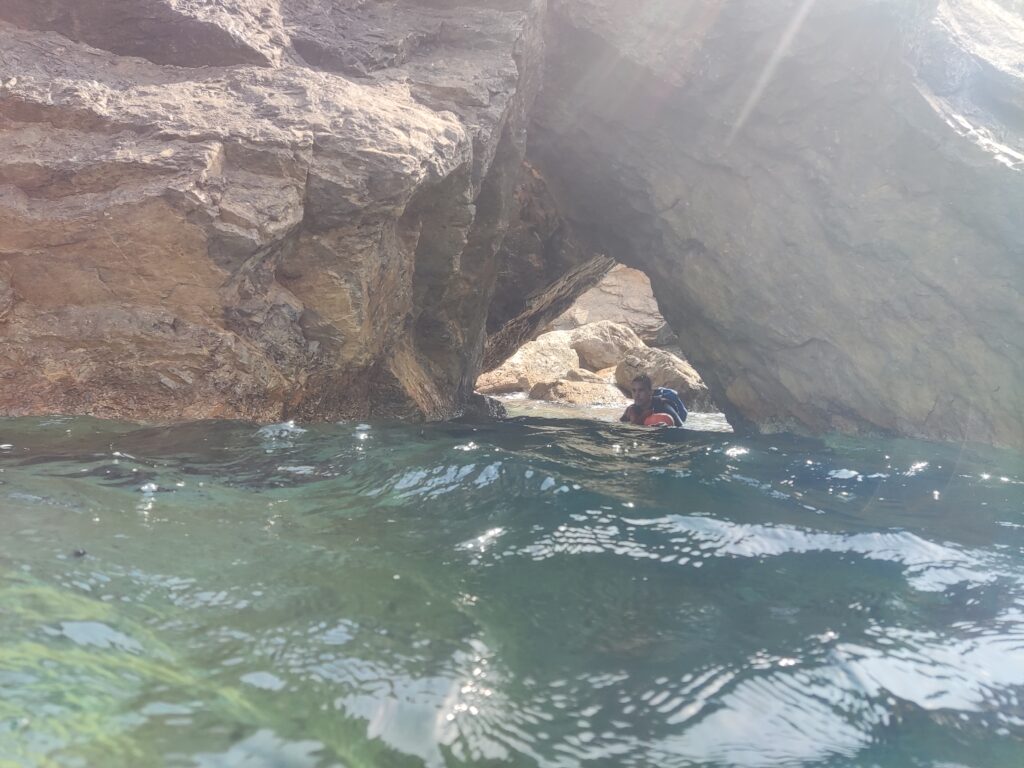
Why Try Coasteering?
Coasteering is not just an activity; it’s an experience that combines adventure, nature, and adrenaline. Those who have tried it describe it as a unique way to explore coastlines, push their limits, and connect with the natural environment in a way that few other activities offer. Here are some key reasons why it’s worth trying coasteering:
1. Combination of Activities
Coasteering combines hiking, climbing, swimming, and cliff jumping into a single experience. It’s ideal for people who love variety and want to try different skills in one activity.
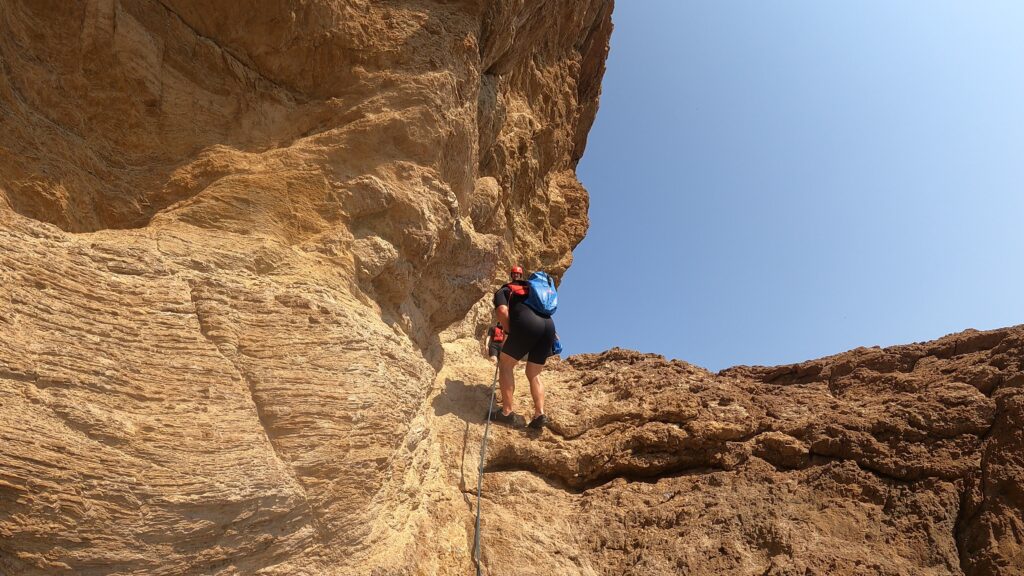
2. Exploration of Inaccessible Areas
One of the greatest joys of coasteering is accessing remote coasts, hidden coves, and sea caves that aren’t reachable by land or sea using conventional means. This provides a unique sense of discovery and exploration.
3. Adrenaline and Adventure
Coasteering boosts adrenaline with cliff jumps into the water, open water swimming, and scrambling over rocky surfaces. For those seeking excitement and adventure, this activity is the ultimate challenge.
4. Connection with Nature
Beyond the adrenaline, coasteering offers a unique opportunity to connect directly with the natural environment. Moving between rocks and sea, you enjoy the pristine beauty of the coastlines, the sound of the waves, and the clarity of the water.
5. Suitable for All Levels
Although coasteering sounds adventurous and intense, there are routes for every experience level, from beginners to advanced. With the right guidance and equipment, even those with less experience can safely enjoy this activity.
6. Confidence Boost
Taking on and completing challenges such as cliff jumps and rock climbing boosts confidence and a sense of achievement. Coasteering helps you overcome your fears and discover your potential.
7. Teamwork and Fun
Coasteering is a great group activity. Participants help and encourage each other at every step, creating strong bonds. It’s an ideal activity for friends, families, or corporate teams who want to share an unforgettable experience.
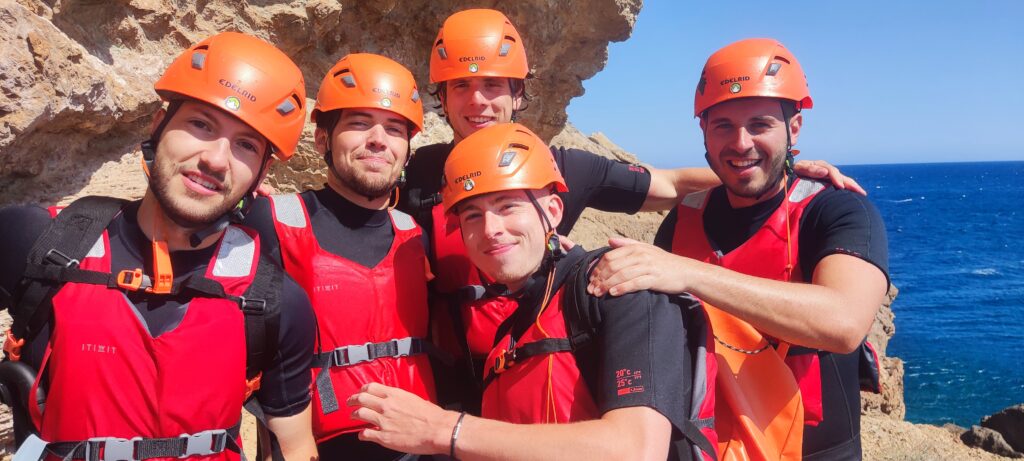
For families ?
Coasteering can be suitable for families, as long as it is adapted to the needs and abilities of the participants, especially if there are children involved. The difficulty levels can be adjusted according to the age and physical condition of the family members, and guidance from experienced instructors is essential for everyone’s safety.
Many places that offer coasteering have routes specifically designed for families, avoiding the more dangerous jumps or particularly difficult climbing sections. Families can enjoy the natural beauty of the coastlines and share an adventure that combines swimming, exploration, and fun in a safe environment.
Therefore, coasteering can be a great activity for families, offering a unique experience that brings members closer together, strengthening teamwork and cooperation in a natural setting.
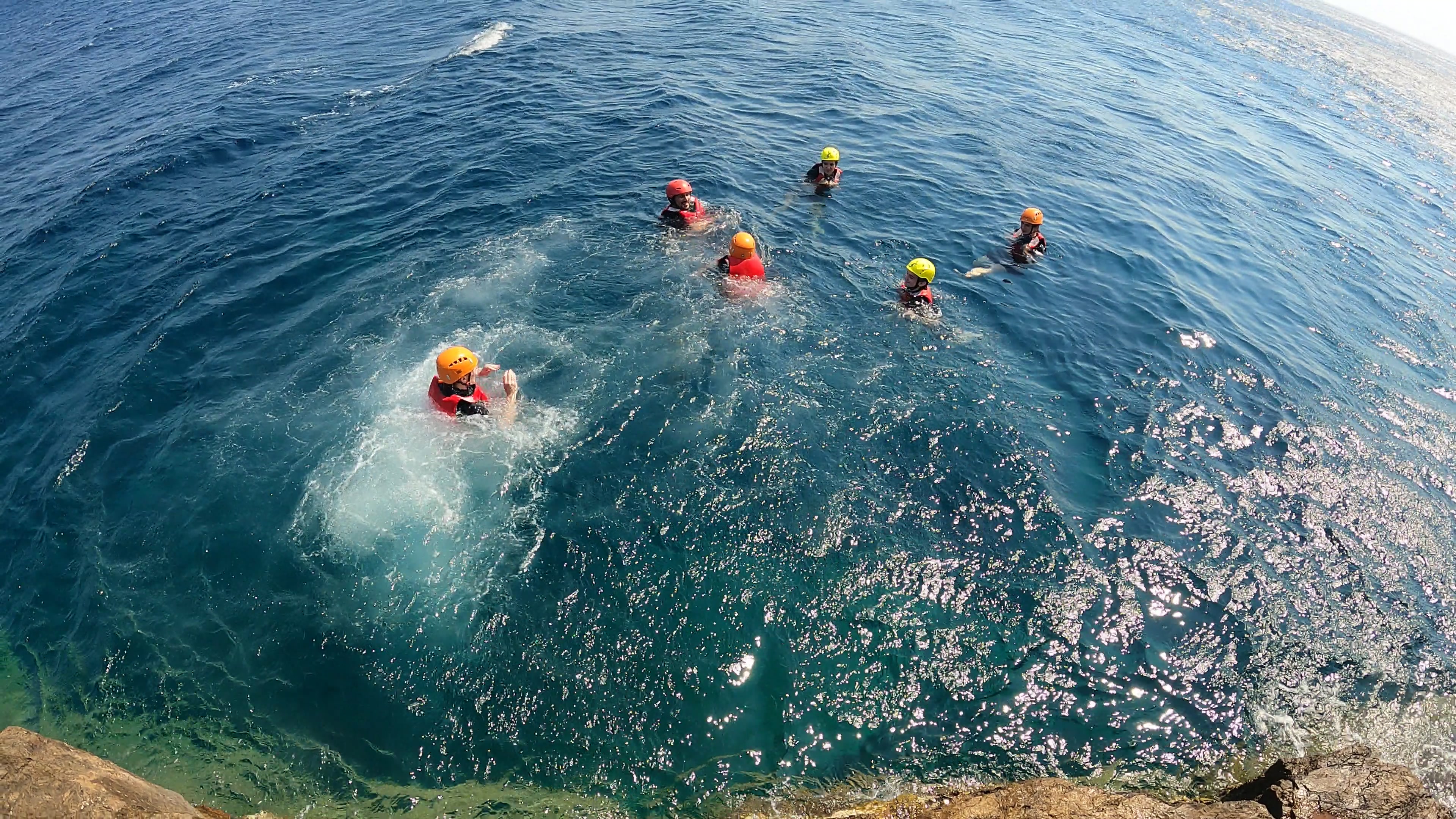
Tags


